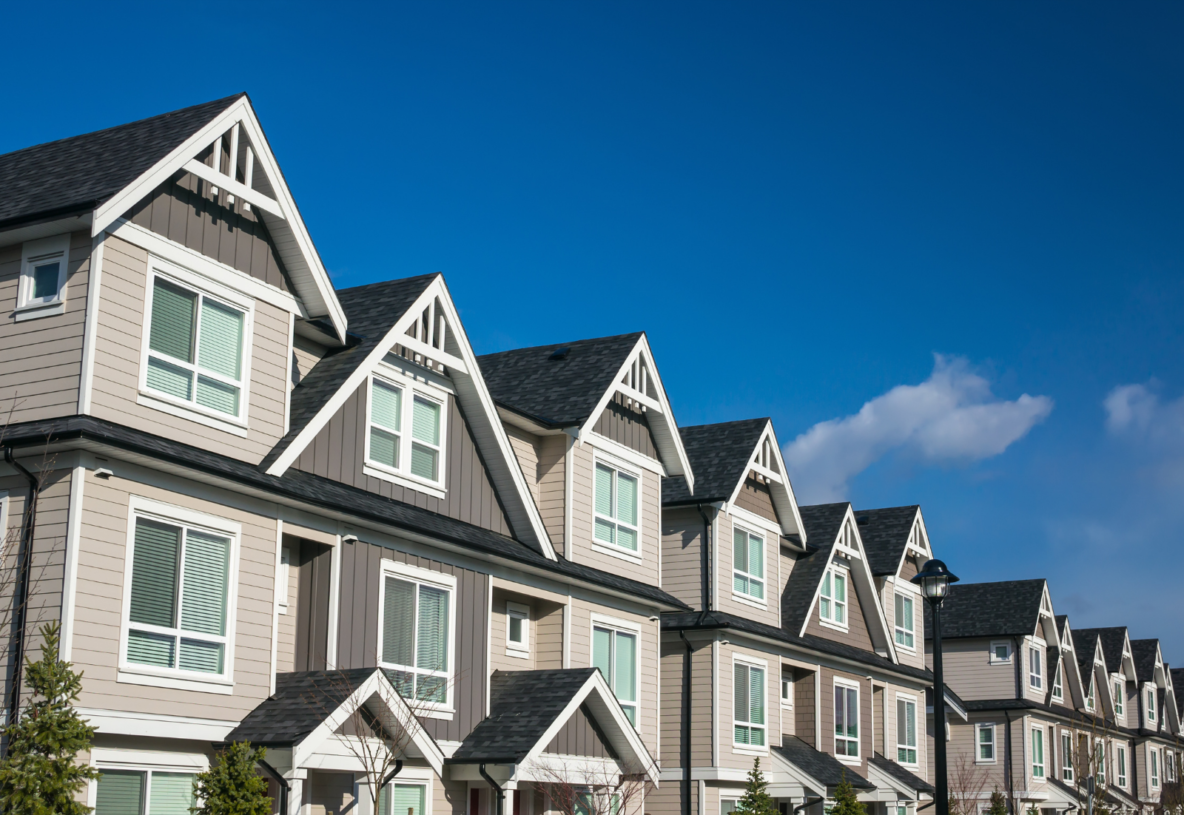There are many different types of roofs. Regardless of which type of roof you have on your commercial building, you have many options when it comes to roofing materials. Let’s explore the pros and cons of each type of roofing material so you can determine which one is best suited for your commercial building.
Flat roofs and low-slope roofs
Many commercial buildings have flat or low-sloping roofs. These roofs require less materials because they cover less square footage than pitched roofs. Consequently, they are also much quicker to install which easily translates into a cost-savings for the owner. Additionally, maintenance is less precarious on flat and low-sloping roofs and can be done safely, regardless of weather conditions. Air conditioning units, satellites and solar panels can easily be installed on flat roof surfaces.
However, don’t trust the construction of your flat or low-slope roof to anyone but the professionals. When improperly installed, flat roofing membranes are prone to ponding and both are prone to leaking which can lead to water intrusion and mold growth—costly damages for any owner to repair!
Material choices for these roofs include:
- EPDM membrane: EPDM or ethylene propylene diene methylene, is a popular synthetic rubber roofing membrane that is most commonly used on flat and low-sloped roofs. It’s easy to stretch and custom fit to any roof and has a proven track record of more than 60 years of use. EPDM membranes are highly durable and seams are sealed with tape or other adhesives. The primary disadvantage of an EPDM roof is that the membrane can shrink after being exposed to the heat over long periods of time, causing seams to tear and leading to water intrusion.
- TPO membrane: Thermoplastic polyolefin is an affordable alternative to PVC. TPO is flexible, expanding and contracting to accommodate building movement and settling. It’s also 100% recyclable making it an eco-friendly choice for environmentally-conscious building owners. Much like EPDM and PVC, TPO is lightweight, repels water and if the roof is a low-pitch, it facilitates water drainage.
- PVC membrane: Also known as Polyvinyl chloride, PVC roofing is fire-resistant and will self-extinguish flames in the instance of a fire. PVC is durable, resistant to wind, rain, ice and snow and is virtually impossible to tear or puncture. The only disadvantage to a PVC roof is a slightly higher price point when compared to EPDM and TPO roofing membranes.
Pitched roofs
One obvious benefit to low-slope and pitched roofs is the ability for them to shed water and debris. In some cases, this can translate into fewer costly repairs from water damage and from punctures to the membrane.
Pitched roofs require greater amounts of materials because they take up more square footage. They are also more difficult to install and maintain on account of their grade. As a result, owners can end up paying more for roof work.
- Asphalt shingles: The most common roofing material for pitched roofs are asphalt shingles. These shingles are timeless and come in a variety of colors, making it easy to coordinate shingles with the siding. They have a lifespan of 15-30 yearsand are durable, protecting roofs from the gamut of harsh elements.
- Cedar shakes: If you’re looking for an unconventional choice for your pitched roof, cedar shakes are a great option. They have a lifespan of 50 years or moreand add a rustic, cottage feel to any building.
Retrofit metal roofs
If you have a metal roof in disrepair, you can retrofit a new roof onto the old one. Retrofits are more cost-effective than reroofing and don’t cause as much interruption to your building’s tenants. They’re also a more environmentally-friendly option because they make use of the old metal roof and they increase energy-efficiency when the new membrane adds insulation on top of the old roof’s insulation.
From flat and low-slope roofing products to asphalt shingles and cedar shakes to durable and long-lasting metal roofing, Hoyt Exteriors has you covered. If you’re interested in re-roofing your commercial building, contact us here and we can discuss which roofing method and materials are right for you!

